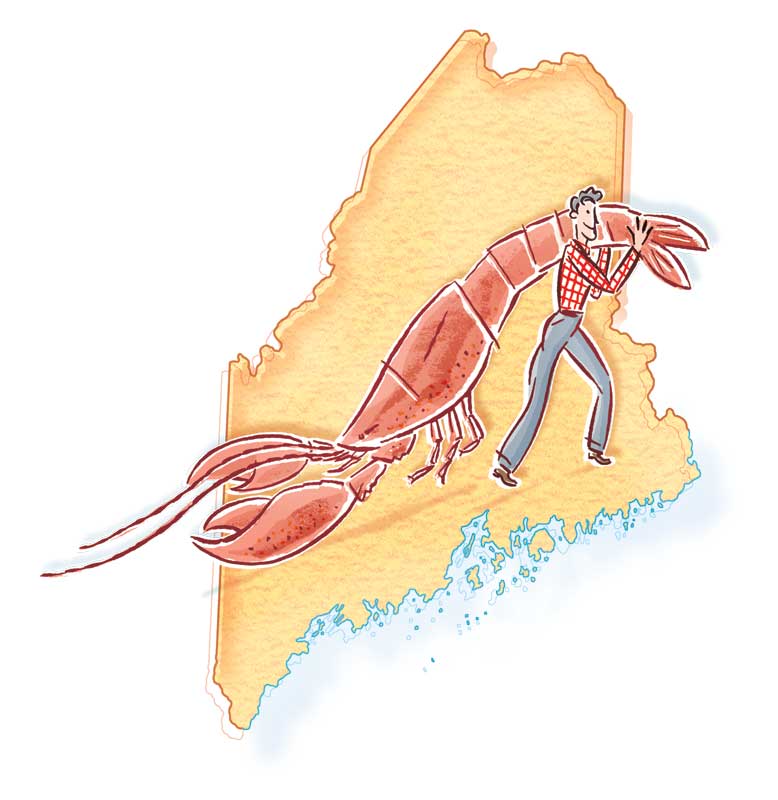Maine Food Trail: Lobster Rolls
A lobster roll is a simple thing: basically, cold lobster meat stuffed into a warm bun. It’s the street food of the rocky Maine coast–a vernacular masterpiece served high and low, at lobster pounds, cookhouses, and seafood shacks, at supermarkets and gas stations, at fast-food chains and in home kitchens. But for a lobster roll […]


Photo Credit : Laish, James
But for a lobster roll to be a lobster roll, and not a lobster salad or some other concoction, it shouldn’t stray too far from the classic archetype; you can bend the lobster-roll rules, but you shouldn’t break them. For example, the bun can be any shape as long as it’s brushed with butter and slapped on the griddle to cook to a golden-brown; stale buns, freezer-burned buns, and ungrilled buns will ruin the roll. The meat, ideally a mix of knuckle and claw, with maybe a little bit of tail, must be picked from the bright red shells of freshly cooked lobsters, not leftover or dead ones. It’s best chilled but not quite cold; tossed with salt, black pepper, and a little bit of mayonnaise; and packed tightly and neatly into the bun. A pickle on top is traditional; so are a lettuce leaf (Bibb is best), a sprinkle of celery salt or paprika, and maybe a squeeze of lemon juice.
Most Maine lobster rolls fit some variation of this description. Some are better than others, some are a lot worse, but context is what really separates the best-in-show from all the other mutts. At its best, a lobster roll is an edible excuse to drive down some long road to some big view and to take it all in with seagull sounds and a side of onion rings. Here are five classic lobster-roll spots where the sights are just as good as the grub.


